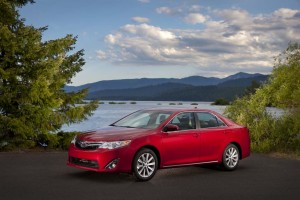The next few months will be critical for Toyota. The maker has finally gotten its global production network up to speed after a slowdown caused by Japan’s March 11 earthquake and tsunami. And with the launch of the new 2012 Camry, Toyota is setting in motion a major product blitz that will bring close to a dozen significant vehicles to market over the next year.
But that may not be enough to pull the maker out of the doldrums, warns a key industry analyst, who believes it could take years for the troubled maker to climb back after a series of problems that began with a series of embarrassing recalls in late 2010.
“This could take several years, or at least one product cycle, to implement,” cautioned Peter Nesvold, an analyst with Jefferies & Co. in a presentation to investors.”
There’s little doubt Toyota has some series challenges ahead of it. The maker recalled more than 10 million vehicles last year alone. And while the majority were connected to concerns about so-called unintended acceleration, the maker also faced problems ranging from steering to braking and excess corrosion that could cause pieces of its minivans to fall off while driving.
But the loss of more than a half million units of production worldwide – including significant cuts at Toyota’s vast North American factory network – have taken an especially serious toll. During the depths of the recession, when its Detroit competitors were struggling to survive, Toyota’s U.S. market share surged to a record 17%, nearly topping General Motors’. Last month, despite a modest improvement in inventory, Toyota’s share slipped to 11.5% and it was overtaken by Chrysler, slipping to the number four spot in the American market.
At the formal U.S. launch of the Camry, in August, Toyota brand boss Bob Carter insisted the sedan “will continue to earn its position as America’s number one-selling passenger car.” But it has slipped, in recent months, behind the Chevrolet Malibu and other competitors from both the U.S. and Japan, as well as from Hyundai, with its Sonata, are aiming to keep Camry from regaining its crown.
Part of the problem, analysts caution, is that not only are there plenty of new competitors, like the recently-updated Ford Focus, coming to market, but many of them are showing the ability to tackle Toyota where it has normally dominated: in the quality charts.
“Quality is now a given,” wrote Nesvold. “Toyota’s historical reputation for quality was no longer the differentiating factor that it had been for many years.”
Complicating matters, Toyota’s recent products have won mediocre reviews for what has frequently been derided as stodgy design. The new Camry has taken similar hits. (See TheDetroitBureau.com’s review of the 2012 Camry. Click Here.)
Despite – or perhaps because of – such concerns, Toyota has significantly loosened the strings on its marketing purse. It promises to back the launch of the new Camry with the biggest ad campaign in its history.
Meanwhile, Toyota and its various brands boosted incentive spending by 16.5% last month, to $2,472 compared with $2,121 for the average vehicle in September 2010. The industry overall cut spending by a little less than 1% year-over-year.
Toyota’s problems aren’t limited to the U.S. The maker has suffered serious hits around the world and the production cuts alone will likely result in its slipping from its lead in the global automotive sales war to third for all of 2011, behind both General Motors and Volkswagen. The German maker, in particular, is intent on taking down its Japanese rival, promising that by 2018 it will be the world’s auto sales leader.
Perhaps the real test of Toyota’s staying power will come in the final quarter of the year as its inventories return to normal and it will have no excuses, echoes AutoTrends analyst Joe Philippi, “that sales haven’t recovered because of the earthquake.”

